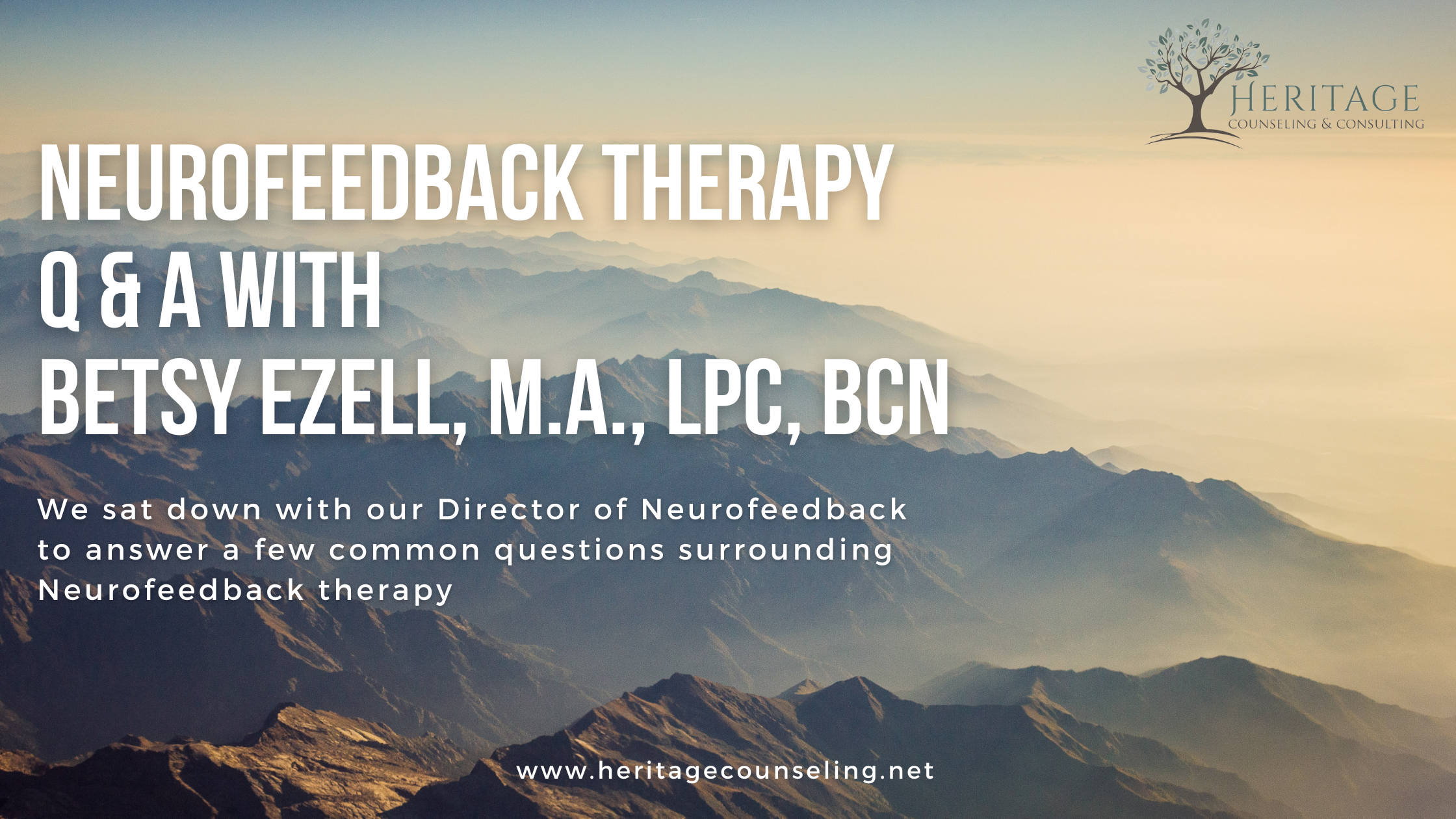Neurofeedback therapy has become a more popular treatment option for many different mental illnesses, but there are still questions surrounding this therapeutic approach. We sat down with our Director of Neurofeedback, Betsy Ezell, M.A., LPC, BCN to discuss Neurofeedback, including what sessions look like, who might benefit from it, and more.
Q: What is Neurofeedback Therapy?
A: Neurofeedback is a type of brain training. It’s non-invasive, painless, and has very little risk associated with it. How it works: Initially, we complete an assessment called a qEEG Brain Map. Using sensors placed on the scalp we record brain waves (also known as electroencephalogram). Using the brain wave information in the EEG, we can identify areas of the brain and the brain wave resources that may be over or under-utilized and how that contributes to functioning. Once we have this information, we know specifically which areas of the brain we want to train and which brain waves we want to target for each individual.
Q: What does a session look like?
A: Neurofeedback sessions are scheduled twice a week for 30-minute appointments. During training sessions, a neurofeedback provider will place sensors on the client’s head, according to the protocol created after the qEEG. The client will elect an engaging TV show or a game of their choice. During the session, clients will receive visual and auditory feedback as the brain works to meet thresholds, set in the neurofeedback software designed to regulate brain wave functioning.
Q: Who would benefit from doing Neurofeedback?
A: Neurofeedback’s most robust body of research is indicated for focus and attention difficulty (ADHD), mood and anxiety disorders, post-traumatic stress disorder (PTSD), sleep quality enhancement, substance use/abuse, head injury recovery, and athletic/peak performance as well as for cognitive clarity/performance. We’re also seeing the research body grow for Neurofeedback’s efficacy with Autism Spectrum Disorders.
Q: Is it safe and are there any side effects?
A: On the spectrum of neuromodulation interventions, Neurofeedback, when performed ethically and by a board-certified provider, is considered one of the safest and least invasive neuromodulation interventions. A large portion of the literature reviewing side effects of Neurofeedback commonly identifies mild drowsiness and fatigue after a training session as possible symptoms. These symptoms typically are present if the targeted brain wave frequency range is too high or low. Neurofeedback providers work directly with clients to identify the exact individualized frequency range for each client, and the aforementioned negative symptoms are easily mitigated.
Neurofeedback therapy can be a great therapeutic approach to a variety of mental health struggles. If you are interested in learning more about Neurofeedback therapy, please reach out to Heritage Counseling at 214-363-2345. We offer Neurofeedback at our Dallas, Plano, and Austin offices, and our administrative team will be happy to help connect you with the right Neurofeedback technician.

